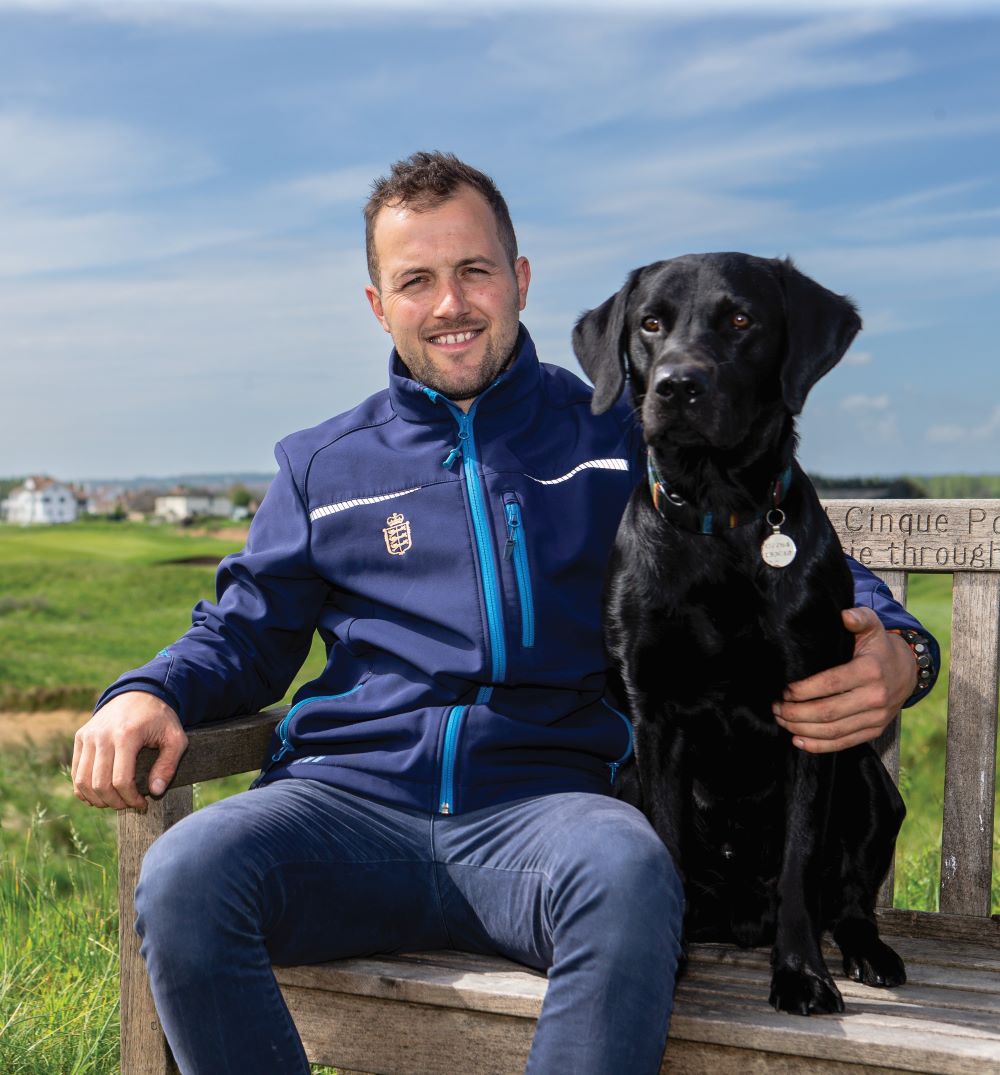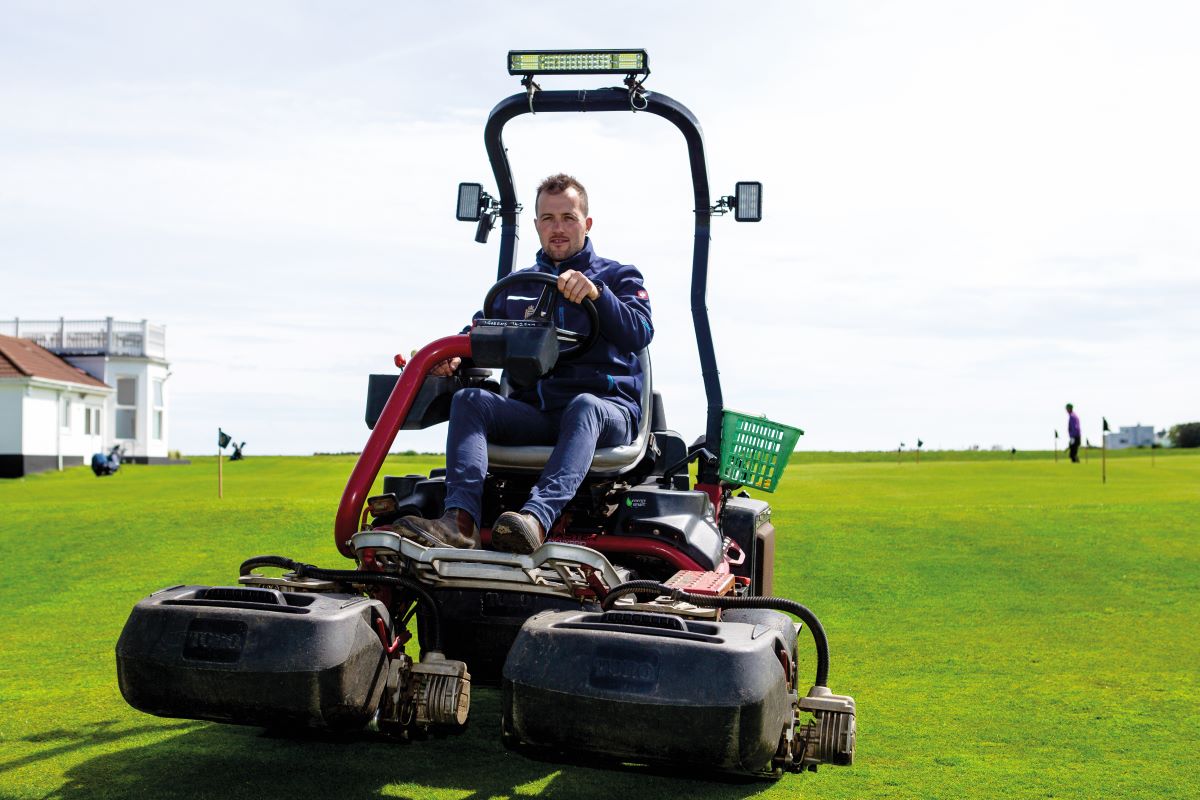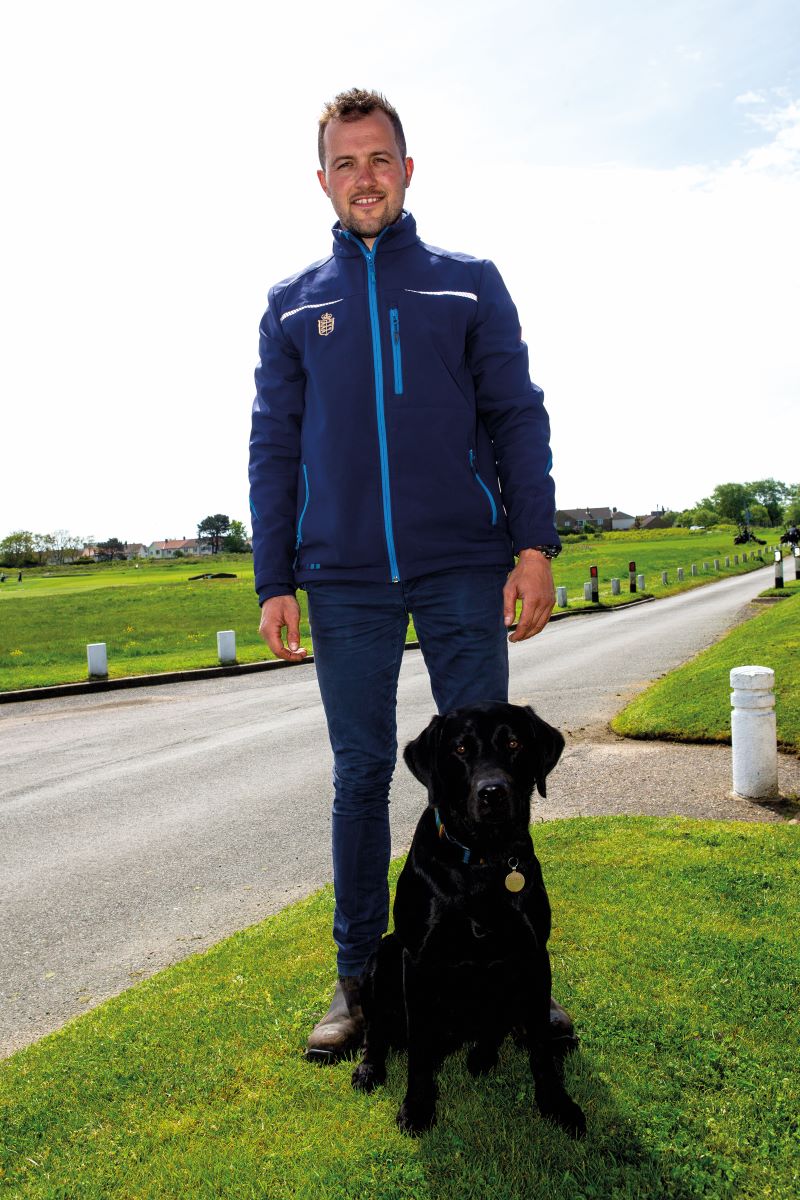- Homepage
- News and Features
- Ben's Deal - a greenkeeper's journey
Ben's Deal - a greenkeeper's journey
The Royal Cinque Ports course manager describes his career journey from raking the bunkers as a youngster at his home club in Wales to his current role at the historic Kent links

Little did he know it at the time, but Ben Williams’s 340-mile journey from Llandudno to Deal began with a twice-weekly task of raking the bunkers ahead of club competitions at North Wales.
The 31-year-old course manager at Royal Cinque Ports fondly recalls his first steps in greenkeeping, taken in the summer after completing his A-levels. As a keen junior golfer, it made perfect sense to find work on the links where he was already a member.
“I would rake bunkers before ladies’ competitions on a Wednesday and men’s competitions on a Saturday morning,” said Williams. “I thoroughly enjoyed the role and was lucky enough to secure an apprenticeship after four months of starting as a bunker raker.”
At the beginning of last year, when his mentor and predecessor James Bledge moved from Cinque Ports to Royal Liverpool, Williams succeeded him as course manager.
How did you get from those early days at North Wales to where you are today?
After completing my apprenticeship at North Wales, I completed a year-long internship in the USA with the Ohio Program. I interned at Double Eagle Club in Ohio and the Sea Pines Resort in South Carolina. On my return to the UK, I worked for a summer season on the 2010 Course at the Celtic Manor Resort. While I was in Newport I secured a summer position in the Southern Hemisphere at New South Wales Golf Club in Australia.
I returned to the UK for a second time and took up the position of assistant greenkeeper at Maesdu, Llandudno, where I completed the first two years of my FdSc Sportsturf Management online with Myerscough College.
I then headed for Royal Cinque Ports in June 2017 and started out as an assistant greenkeeper. Over the next five years I enjoyed a steady rise up the ranks at the club, becoming first assistant greenkeeper in 2018, deputy course manager in 2020 and was promoted to my current position as course manager in January 2022.

What was the interview process like for the course manager’s role?
The interview was split into two stages. The first stage was a formal interview with the club secretary, chairman and chairman of greens. The second stage was a presentation to a panel of six. I was asked to present on the current course condition, my plans for the first three months in the role, resources required to continue the process of improvement, methods of communication and my vision for the club over the next five years. The presentation was followed by dinner in the clubhouse, where the panel had the opportunity to ask any further questions.
What do you feel were the qualities that you had to offer that got you the role?
As deputy course manager I was exposed to a number of tasks and skills that prepared me for the jump in positions. I gained experience of writing department budget reports for the club’s board of directors and quarterly course reports in the years before becoming course manager.
What is the remit of your role?
The remit for myself and the rest of the greenkeeping team is to deliver the highest possible standards of course condition and presentation to the membership, guests and visitors on a daily basis. My key responsibilities include agronomic planning, budgetary control of the greenkeeping department, human resource management and health and safety.
What kind of working relationship do you have with the other management leaders at the club?
We’re in an advantageous position at RCP that the maintenance facility is located very close to the clubhouse, which lends itself to regular interaction with other departments. All of the club’s department managers have a close working relationship with one another and meet every Friday morning to discuss events of the last week and to plan for the following two weeks. The meeting helps to resolve any issues that may have arisen and aims to prevent them reoccurring. It also helps to co-ordinate any activities at the club that cross between different departments.
What are the specific demands and challenges of working on a world-class links?
The course is an incredibly undulating, free-draining, sandy site, so the biggest challenge we face during the summer is ensuring the surfaces remain adequately irrigated with the volume of abstracted irrigation water we have at our disposal. The free-draining nature of the site does, however, mean that we enjoy favourable ground conditions in the winter for completing project work.
Due to the nature and standing of the club, the expectation from members, guests and visitors for high-quality course conditioning is an everyday demand which myself and the team thrive on and do our best to deliver. The membership is incredibly supportive of the greenkeeping team, as is the club, which is fantastic for everyone involved.
What specific course projects have you got going on at the moment?
We have recently finished phase one of three of the club’s course masterplan, which was devised with the help of golf course architects Mackenzie & Ebert. Winter 2022/23 saw the introduction of 15 completely new bunkers positioned strategically in fairway landing zones, six new tees, two sleeper boardwalks and a new dune to the right-hand side of the 16th fairway. Additional bare sand areas and dune slacks have also been created on the 9th and 17th holes in areas of scrub and rank grassland. The clearance work served to create material for the winter construction projects and also created a more appropriate habitat for duneland species.
Phase one of the masterplan mainly focussed on in-play areas so that the World Handicap System Course and Slope rating could be re-rated in February. All of the tee sets have now been rated for both male and female golfers and golfers will be encouraged to play from the tees which are most appropriate for their ability. The changes were also designed to future-proof the championship status of the golf course.
Phase two and three of the development plan will be undertaken over the course of the next two winters and will focus on further dune construction and grass path work.
How long did it take the course to come back following last summer’s drought?
Last summer was an exceptionally challenging time for greenkeepers up and down the country. RCP received just 37mm of rainfall for the whole of June, July and August, while temperatures peaked at 34°C. The club invested in a new Toro Lynx Irrigation System in 2019 and it certainly paid dividends last summer.
All mown surfaces on the course receive monthly wetting agent applications which helped to maintain surface coverage and helped with the re-wetting of soil profiles when rainfall arrived.
The greenkeeping team have also been using Barenbrug SGT Fine Fescue to overseed fairways in recent years which has contributed to improved drought tolerance on these surfaces.
Inevitably, surface coverage was lost on isolated areas of the course during the drought, so an extensive overseeding programme was implemented last autumn to aid recovery in these areas. The majority of the affected areas have now recovered well and we are heading into the summer months off the back of a very favourable spring period for links courses in the south east.

How would you describe your management style and general way of working?
I always like to have a clear plan laid out as to what we want to achieve. We plan work programmes seven days in advance during the playing season, but these plans are subject to change with the weather and other scenarios.
During the winter, and project work, I use Gantt Charts to help manage the completion of tasks. It helps me to plan the logistics of project work while providing a visual guide to the team’s progress and whether we need to assign a greater volume of man hours to complete time critical tasks.
The greenkeeping team uses a variety of different technologies to maintain the golf course. We use Pogo and TDR moisture meters to help with accurately mapping soil moisture levels, ensuring irrigation is used efficiently and only targeted at areas of turf that need it.
How have your furthered your knowledge in recent years?
I’m a regular attendee at BTME and have attended the Continue to Learn Conference for the last two years.
How often do you get to play golf and where do you like to play?
I’m currently playing off a handicap of 5, but that has been slipping of late. My favourite place to play golf when I’m not playing at RCP is the Northcliffe Course at North Foreland, a fantastic 18-hole short course just down the road in Broadstairs.
Do you have any mentors in the industry?
My closest mentor is my predecessor at RCP, James Bledge, who moved on to take up the course manager’s position at Royal Liverpool.
James has always encouraged me to step outside of my comfort zone and develop new skills. An example of this was when I was asked to deliver a course winter plan presentation at a membership evening while I was deputy course manager.
It’s always nice to be able to pick up the phone and discuss all things RCP with James, not only as a mentor, but as a close friend. When I was promoted he shared with me as much of his knowledge and wisdom that he had accumulated at RCP over his nine years at the club. We went through all the intricacies of the role in depth over a number of weeks, which was invaluable before stepping into the position.
What advice would you give to a greenkeeper starting out today?
Grab every development opportunity with both hands and don’t be afraid to ask questions. Take pride in what you do and enjoy your work.
Our facilities and machinery
“The club has invested significantly in upgrading the greenkeeping team’s facilities, with the construction of a new office, break room and male and female changing facilities. The team is very well supported by the club and has access to an extensive fleet of modern greenkeeping equipment. Most of our mowing equipment is Toro, while our utility vehicles and tractors are a combination of Toro, John Deere and Kubota. We also have a new John Deere ProGator with Mounted Dakota 410 Topdresser for spreading our native dune sand; a Campey 4 Star Seeder for dimple seeding and a Toro 648S Procore.”
A (Working) Day in the Life
0530: Arrive at work
0545: Meet with the team to discuss the plan for the day and whether we need to modify the work programme
0600: Daily team meeting with the whole team to brief everyone on their assigned tasks. My job varies from day to day, but I always aim to get out onto the course ahead of play to assess turf conditions and any project work progress
0800: Catch up with outstanding administrative tasks
1000: Lunch
1030: Post-lunch meeting with members of the team who have completed course set-up tasks to assign tasks for the afternoon
1100: Attend any meetings in the knowledge that the course has been setup for a full day’s play
1500: Run through the following day’s plan and make a final check of the weather forecast
1600: Leave work
Author

